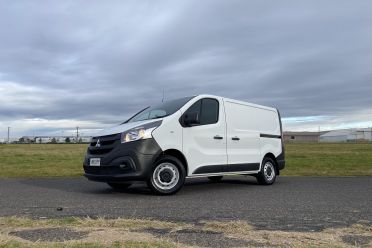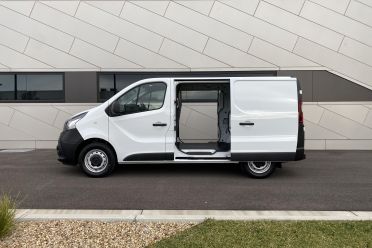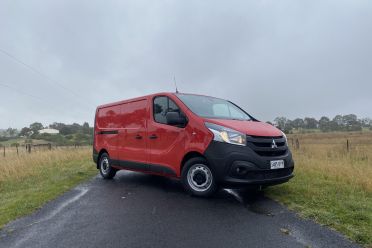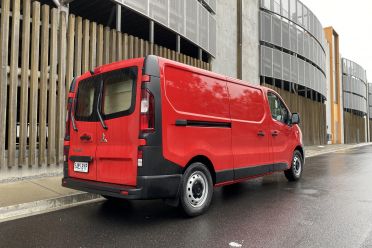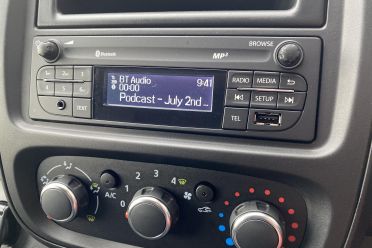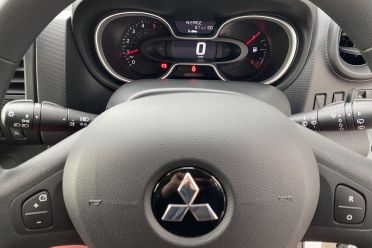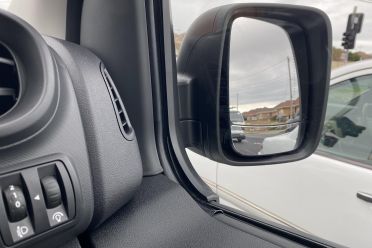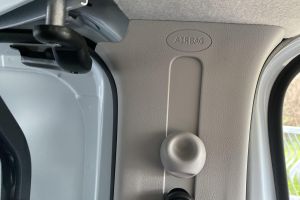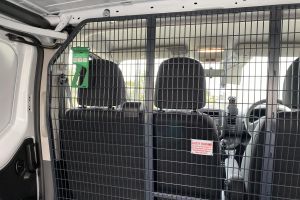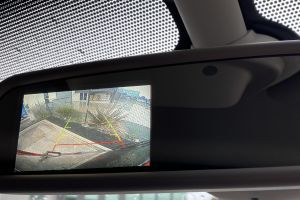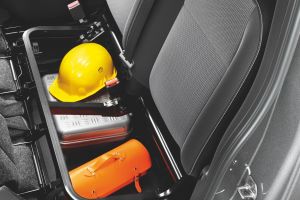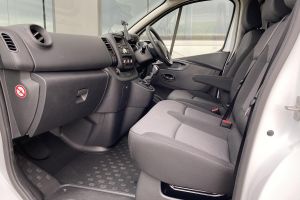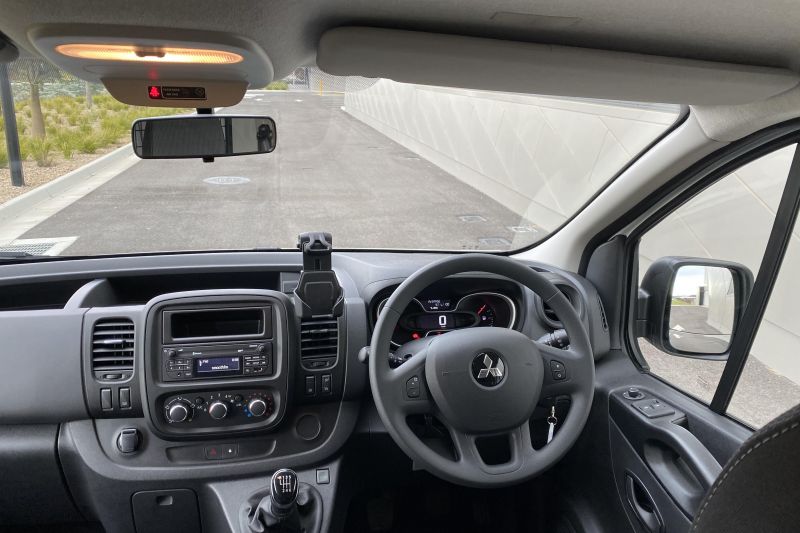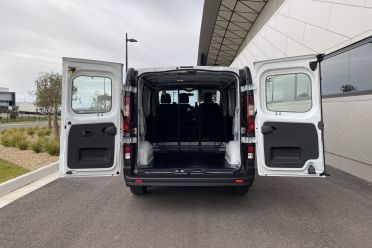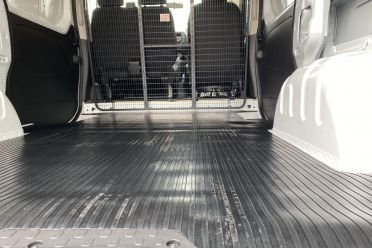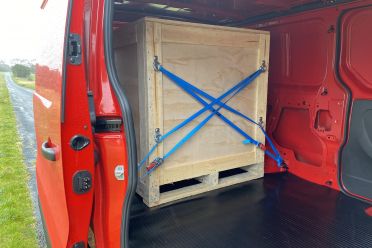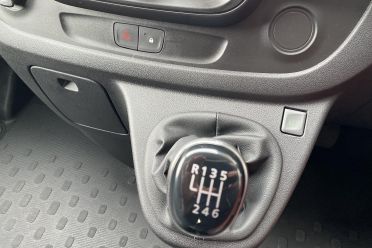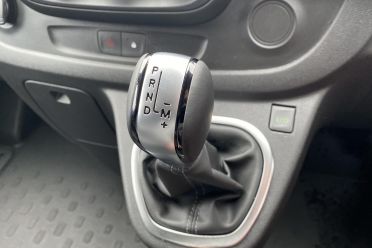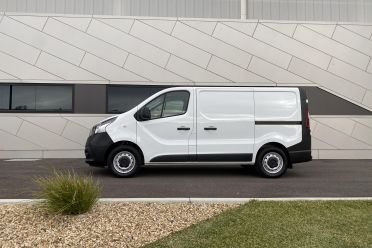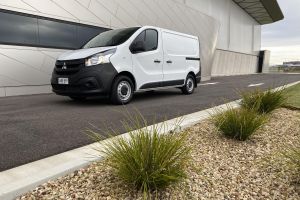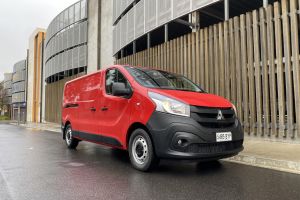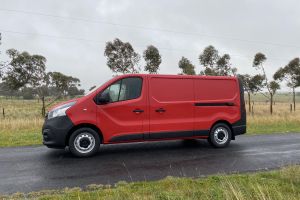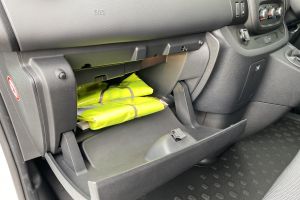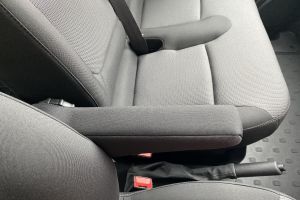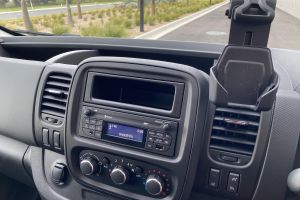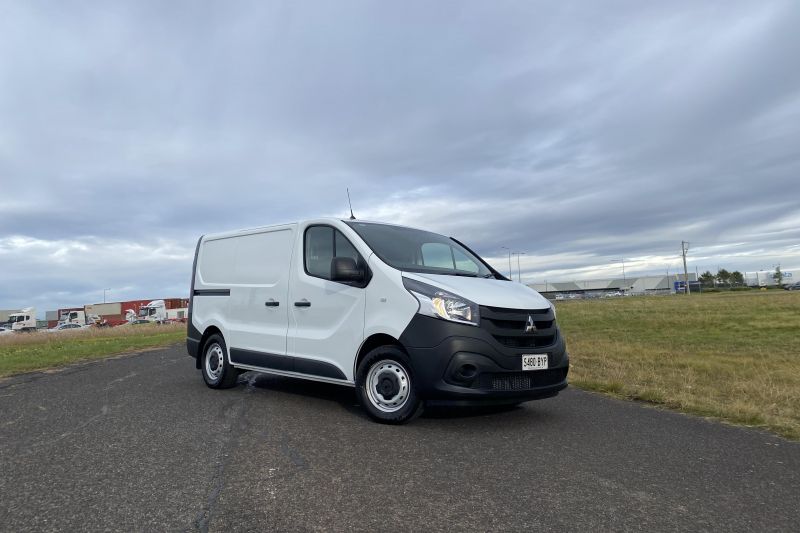Mitsubishi Australia exited the fleet-focused van market in 2013 when it retired the old budget-priced Express. But now the brand and the badge have returned, affixed to a subtly restyled Renault Trafic.
For those out of the loop, Mitsubishi is part of the Nissan-Renault Alliance these days, given the former is a major shareholder. Leveraging this instead of making something new from the ground up was a no-brainer.
The resultant French-built 2020 Mitsubishi Express was actually developed just for Australia and New Zealand, where the Japanese brand sees potential to sell it alongside the popular Triton.
Mitsubishi claims it has some advantages compared to Renault, which has been Europe’s top van-maker for years. It has more Australian dealerships and service centres particularly outside city centres, and also sells the Triton ute at huge scale.
This latter point means it can now offer two types of commercial vehicle to fleet customers, who naturally see benefits in dealing with a single brand. Greater purchase scale can mean better pricing.
How much does the Mitsubishi Express cost?
There are two wheelbases and two drivetrains available.
The base short wheelbase (SWB) with a 1.6-litre twin-turbo diesel engine and manual gearbox costs $38,490 before on-road costs, and the long wheelbase (LWB) with the same drivetrain costs $40,490 before on-roads.
Meanwhile the SWB with dual-clutch automatic and a more powerful 2.0-litre diesel engine costs $42,490 before on-roads, or $44,490 before on-roads in LWB form.
When lined up next to an equivalent version of the Trafic, every Mitsubishi Express derivative lists $1000 cheaper. Given they both come from Renault’s Sandouville plant, that seems like a reasonable effort.
The old Mitsubishi Express sold for less than $30,000, but it was also a one-star crash-rated stripper with an anaemic petrol engine and a cabin sparser than a Nullarbor vista. That market is now owned by the Chinese LDV G10, which kicks off at $25,990.
What’s surprising is the lack of an Express derivative to tackle Renault’s entry 85kW Trafic Pro, which would cut the price point to around $35,500 using the same logic.
How does the Mitsubishi stack up to its rivals? The base Toyota HiAce diesel costs $42,140 before on-roads, a base Hyundai iLoad diesel $39,680 before on-roads, a base Ford Transit Custom 340S $42,390 before on-roads, and a base Volkswagen Transporter TDI250 $37,490 before on-roads.
Keep in mind all of these prices are RRPs before on-road costs. A majority of Mitsubishi Express buyers will control business fleets of 100 or fewer vehicles, and will use their ABNs to get cheaper prices. Mitsubishi doesn’t disclose its fleet rates, but promises they’ll be “very competitive”.
What do you get?
The Mitsubishi Express’s equipment list is pared right back compared to many competitors.
All versions get cruise control, a speed-limiter, rear parking sensors, manual air-conditioning, halogen headlights and daytime running lights, fabric seats, and 16-inch steel wheels with a full-size spare.
There’s no touchscreen in sight, just an old-style unit with buttons, which has AM/FM and digital radio, and Bluetooth streaming. There are two USB points, and two speakers.
Stepping up to the 2.0-litre auto gets you a few extras such as an electrochromatic rear-view mirror with a small reversing camera embedded, dusk-sensing headlights, rain-sensing wipers, and fog lights.
While we appreciate many drivers will just use their phones in a cradle running Google Maps, most competitor vans (including the Renault Trafic) get an integrated touchscreen with camera, and both Apple CarPlay/Android Auto phone mirroring and/or satellite navigation.
Is the Mitsubishi Express safe?
Mitsubishi won’t be seeking an ANCAP crash rating, so in keeping with our house style we will leave the safety section unrated.
But we’d note that the Trafic scored just three stars in Euro NCAP testing in 2015, and also note the HiAce, Transit Custom, and Mercedes-Benz Vito all have five-star ratings. The LDV manages three stars, and the iLoad four.
Safety features in the Mitsubishi Express include dual front and side-curtain airbags, plus a separate driver’s lower-side airbag (so five ‘bags total), and stability control with a trailer-sway mode.
We’re seeing more vans coming with autonomous emergency braking, active cruise control, lane assist, active blind-spot monitors and the like, as standard features these days. The market-topping HiAce comes right to mind.
What is the Mitsubishi Express like on the inside?
Anyone jumping out of an old Mitsubishi Express will be blown away by the ergonomics. There’s three comfy seats, a step to help you up, reach- and rake-adjustable steering, buttons on or behind the wheel, a digital speedo, a commanding road view, big side mirrors, and heaps of space.
But these demands are also met by competitors.
The cabin has a million and one places to put your things: multiple big doors bins, open sections atop the dash, and cupholders near the outboard vents.
That phone cradle comes standard, but my iPhone 11 didn’t fit, and I can’t imagine many modern large smartphones do. Seems a little dated.
The old-world audio head unit looks dated too, but to its credit I paired up my phone within 30 seconds, and it re-paired swiftly every time.
Call quality was okay at low speeds, but there was booming and road noise from the cargo area (especially on a wet test day) at higher speeds that did interfere somewhat.
Those big side mirrors have a lower section to watch kerbs when parking, but the absence of a reversing camera on manual versions seems stingy. Especially if you’ve a large load blocking your rearward view.
The cargo area is not separated from the occupant zone by a solid steel bulkhead with window like it is in the Trafic or Transit Custom.
Mitsubishi offers an Australian steel mesh crash barrier instead, as an extra-cost feature. This was fitted to both our test vans, as was a rubber floor lining.
Like Toyota, its customers apparently prefer this variety of protection, though it isn’t as effective at keeping noise out of the cabin, and heating/cooling in. It’s sure to meet every crash requirement thrown its way, though.
Unlike some vans, Mitsubishi has commendably made twin sliding side doors standard as well as glazed barn doors that open up to 160-degrees, making them ideal for forklift access.
The useable space is 5.2 cubic-metres for the SWB or 6.0 cubic-metres for the LWB. Cargo area measurements for the former are 2537mm long x 1662mm wide x 1387mm tall, with a pallet-friendly 1268mm between the arches. The LWB models have an extra 400mm in load length.
There are 12 (SWB) or 14 (LWB) anchor points in the floor.
Mitsubishi cites a gross vehicle mass of between 2960kg and 3070kg, equating with a payload of between 1115kg and 1200kg depending on specification.
What’s under the bonnet?
Six-speed manual versions get a 1.6-litre diesel with two turbochargers – a small one that spools quickly to cut low-speed lag, and a larger one that operates at higher revs. It makes 103kW of power and 340Nm of torque at 1500rpm.
But these days around 80 per cent of van buyers opt for an automatic. Renault’s only option is a six-speed Getrag dual-clutch unit that doesn’t come cheap, and is only mated to a more powerful Euro 6d 2.0-litre turbo-diesel making 125kW and 380Nm.
The crucial torque outputs are inferior to the 2.8-litre HiAce, 2.5-litre iLoad or 2.0-litre Transit Custom, but the Express is hardly lacking guts. Moreover, at kerb weights of between 1810kg and 1920kg, it’s about 300kg lighter than the Toyota. Its power-to-weight is rather good.
Claimed fuel economy is a brilliant 6.2L/100km for the manual, and a slightly less brilliant 7.3L/100km for the auto. The tank in each is 80 litres, meaning both are capable of more than 1000km between refills depending on your driving style and average payload.
All Express cabs are front-wheel drive, enabling a lower loading floor in the absence of a shaft sending engine outputs to the rear, and have a button that relaxes the stability control to help you take off more smoothly on slippery grass or ice.
If you tow, the 1.6-litre can haul two tonnes braked, compared to 1630kg (LWB) or 1715kg (SWB) for the autos. The engine might be more powerful in the latter, but the DCT seemingly cannot handle more weight.
How does the Mitsubishi Express drive?
A 1.6-litre engine may sound diminutive, but it pulls seriously well and largely keeps lag at bay. It’s also exceptionally refined, and the manual gearbox is a cinch to operate. I usually just started in second gear to reduce shifting, and the low-down torque proved sufficient.
At 100km/h you’re sitting at around 2000rpm, while pulling up a steepish hill in fourth proved little issue. Against the claim, I averaged 7.6L/100km, spending half the drive in Eco mode which numbs the throttle.
The larger-displacement 2.0-litre engine goes like the clappers, and even with 200kg on board never felt even slightly stressed. Rolling response is actually potent, and it’ll catch many drivers of older vans on the hop.
But more surprising was how smooth the EDC felt. Many dual-clutch transmissions are jerky and indecisive at low speeds, but this unit enables rapid pedal applications, punches into gaps with little lag (though front wheelspin on a wet day did kick in briefly), and shifts quickly. Consider this writer surprised…
Multiple entry points
Mitsubishi has made twin sliding side doors, and forklift-friendly rear barn doors, standard fit
I drove with this drivetrain on a mixed route averaging 40km/h while carrying 200kg and averaged 10L/100km, so the efficiency did take a hit. But a launch drive is always a tenuous way to measure fuel use, plus the engine was very new and tight.
The Trafic has always been one of the smoothest-riding vans out there, which naturally carries over to the Express. The springs compress nicely over speed bumps, and the recovery is well controlled even when unladen. Nor did crosswinds prove too problematic.
The suspension layout is MacPherson struts up front with lower wishbone and stabiliser bar, while at the rear there are coils, with a reinforced trailing arm and a panhard rod.
The steering is heavily assisted, with this lightness suitable for urban duties. Disc brakes (ventilated front, solid rear) proved efficient and effective after multiple applications.
How much does the Mitsubishi Express cost to run?
The Express comes with a five-year warranty, but it’s capped at 100,000km. Many van operators do more than 20,000km annually, so keep that in mind.
Servicing across Mitsubishi’s large 200-strong dealer network (cited as a key advantage over Renault’s smaller footprint) costs $250 per visit for the first three visits, at 12-month or 15,000km intervals.
Here’s the odd bit: Renault advertises more user-friendly service intervals on the exact same engines, of 30,000km. Mitsubishi’s response is that its engineers “have determined the optimal service interval for the Express is 15,000km, which is consistent with all Mitsubishi product”.
Put a less diplomatic way, Mitsubishi clearly reckons Renault’s intervals are lacking mechanical sympathy. That’s interesting.
For context, Toyota charges $245 per service for the HiAce, but at inferior six-month/10,000km intervals covering two years. The first three services on a Ford Transit Custom cost from $385, $705, and $385, but at generous 12-month/30,000km intervals.
CarExpert’s take on the Mitsubishi Express
The Renault Trafic is a solid base, with comfortable dynamics and good fuel efficiency.
Mitsubishi’s more established name in the commercial market here means it’ll likely find solid uptake for the Express, especially among fleets already operating the well-priced Triton.
But for sole traders in particular, it doesn’t offer several features found on HiAce or Transit Custom at (currently) similar price points. We’re talking about a standard reversing camera, phone mirroring, and active safety systems such as AEB that some fleets might be keen on.
That doesn’t mean the Mitsubishi Express won’t be the right work van for many businesses, and the focus on larger no-nonsense fleets is clear as day. This Mitsubishi will need to be priced and promoted right to unseat some very strong competitors, so it’ll be a curious one to watch.

